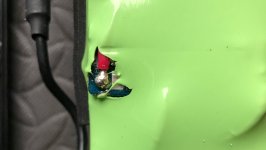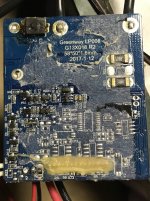rick_p
100 W
I’m pretty sure the BMS is bad, the charging/balancing electronics are still working but there is no power at the discharge port and I’ve already tried resetting it. See this post from earlier in this thread where I posted a picture of the damage.Actually expected a worse case scenario. Your battery is NOT a lost cause and the BMS may be AOK -
BMS replacement questions
The only question I have right now is, can I install a new BMS without any further balancing of the groups? I think it’s fine but would like to get confirmation on that.







